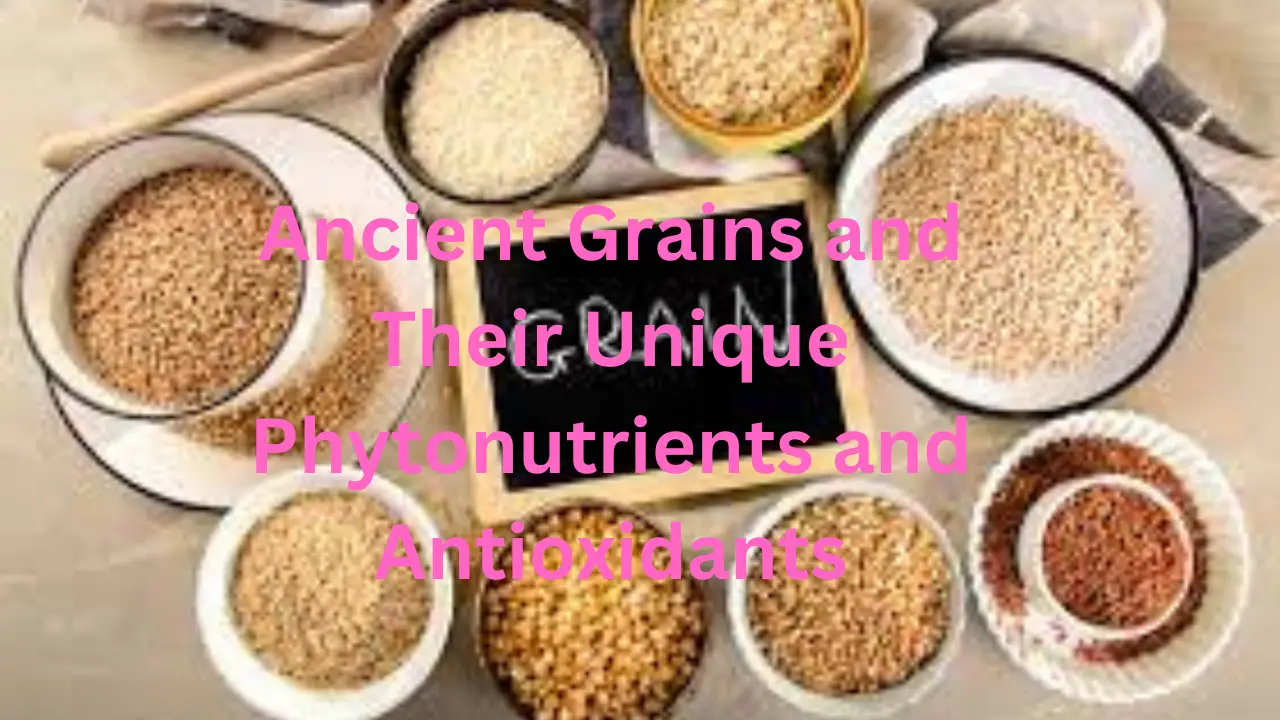
California Design Den Twin Sheets Set, Good Housekeeping Award Winner, 400 Thread Count Sateen Cooling Sheets 100% Cotton Sheets Soft Luxury 3 Pc Dorm Rooms & Adults Twin Bed Sheets Set (White Sheets)
25% OffAncient Grains and Their Unique Phytonutrients and Antioxidants
Ancient grains have transcended time, preserving not only their rich history but also a treasure trove of unique phytonutrients and antioxidants. These compounds contribute to the grai
Ancient Grains and Their Unique Phytonutrients and Antioxidants
ns’ distinctive flavors, colors, and potential health benefits. In this article, we’ll explore the fascinating world of ancient grain phytonutrients and antioxidants and their significance in modern nutrition
Introduction
The allure of ancient grains extends beyond their culinary and historical significance. The remarkable array of phytonutrients and antioxidants they contain adds a layer of depth to their appeal, making them more than just sustenance.
Phytonutrients: Nature’s Gift
Phytonutrients are naturally occurring compounds found in plants. They contribute to plant color, flavor, and protection against environmental stressors.
Antioxidants: Guardians of Health
Antioxidants are a subset of phytonutrients that play a vital role in protecting our cells from oxidative stress caused by free radicals. By neutralizing free radicals, antioxidants contribute to overall health and well-being.
Variety in Ancient Grain Phytonutrients
Different ancient grains boast distinct phytonutrient profiles:
- Amaranth: Contains squalene, a unique antioxidant with potential health benefits.
- Quinoa: Rich in quercetin, a flavonoid with anti-inflammatory properties.
- Sorghum: Provides 3-deoxyanthocyanidins, antioxidants responsible for its unique red color.
- Farro: Contains lignans, phytonutrients linked to heart health.
- Millet: Offers a variety of polyphenols, known for their antioxidant properties.
- Einkorn: Rich in lutein, supporting eye health.
- Barley: Abundant in beta-glucans, contributing to immune health.
Amaranth’s Squalene: A Unique Antioxidant
Squalene in amaranth has been associated with potential health benefits, including supporting skin health and aiding cholesterol metabolism.
Quinoa’s Quercetin: A Powerful Flavonoid
Quercetin in quinoa possesses anti-inflammatory and potential immune-modulating properties, contributing to overall health.
Sorghum’s 3-Deoxyanthocyanidins: A Colorful Antioxidant
Sorghum’s red color is attributed to its unique 3-deoxyanthocyanidins, which exhibit potent antioxidant activity.
Farro’s Lignans: Supporting Heart Health
Farro’s lignans have been linked to reduced risk of heart disease and improved cardiovascular health.
Millet’s Polyphenols: Potent Plant Compounds
Millet’s diverse polyphenol content contributes to its potential antioxidant and anti-inflammatory effects.
Einkorn’s Lutein: Nurturing Eye Health
Einkorn’s lutein content supports eye health by protecting against age-related macular degeneration.
Barley’s Beta-Glucans: Immune Boosters
Beta-glucans in barley play a role in enhancing immune function and supporting gut health.
Utilizing Ancient Grain Phytonutrients in the Diet
- Diverse Consumption: Incorporate a variety of ancient grains to benefit from their unique phytonutrients.
- Whole Grains: Choose whole grains over refined versions to retain the highest phytonutrient content.
- Balanced Diet: Combine ancient grains with a range of colorful fruits and vegetables for synergistic health benefits.
Synergistic Benefits of Whole Grains
The combination of phytonutrients and antioxidants in whole grains contributes to their potential health-promoting effects, including reduced risk of chronic diseases.
Conclusion
The allure of ancient grains extends beyond taste and history. Their unique phytonutrients and antioxidants invite us to explore their potential health benefits and incorporate them into our modern diets. As we savor the flavors of these grains, we also nourish our bodies with the gifts of nature’s protective compounds.
FAQs
- Can consuming phytonutrients from ancient grains replace the need for fruits and vegetables? While ancient grains offer valuable phytonutrients, they should be part of a diverse diet that includes a variety of fruits and vegetables for optimal health.
- Can cooking methods affect the phytonutrient content of ancient grains? Cooking methods can impact phytonutrient content. Steaming and boiling are better choices to retain these valuable compounds compared to high-heat methods.
- Are the phytonutrients in ancient grains stable during storage? Phytonutrients can degrade over time due to exposure to light, heat, and air. Storing grains in a cool, dark place can help preserve their phytonutrient content.
- Are there any potential side effects of consuming large amounts of phytonutrients from ancient grains? Consuming a diverse range of phytonutrients from whole foods is generally safe. However, excessive consumption of isolated phytonutrient supplements may have potential risks.
- Can ancient grains be enjoyed by individuals with dietary restrictions, such as gluten sensitivities or allergies? Many ancient grains are naturally gluten-free and can be enjoyed by those with gluten sensitivities or allergies. However, cross-contamination should be considered for those with severe allergies.






